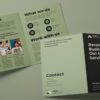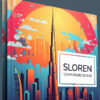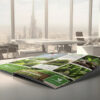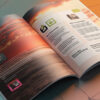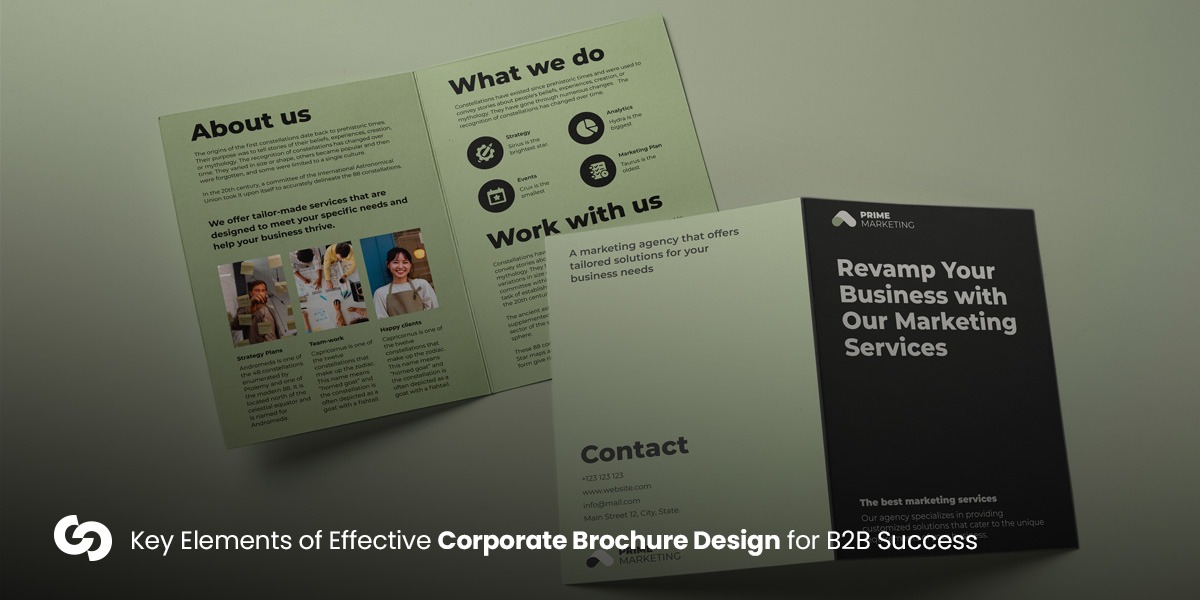
Introduction
In Dubai’s fast-paced B2B environment, making a strong, memorable first impression is critical. Businesses are constantly looking for ways to distinguish themselves from competitors, and one of the most powerful yet often overlooked tools is the corporate brochure. More than just a printed piece of paper, an effective brochure is a vital marketing asset that communicates a company’s value proposition, professionalism, and brand essence.
This article explores the core components that make corporate brochures successful in the B2B space, especially emphasizing the importance of Corporate Brochure Design in building trust, credibility, and conversion in competitive markets.
Clear and Strategic Messaging
A high-performing B2B brochure begins with clearly defined messaging. B2B buyers are decision-makers, stakeholders, and procurement professionals who are short on time and demand clarity.
Strong Value Proposition: Clearly state what sets your business apart. Your brochure should quickly convey how your product or service solves a specific problem.
Audience-Aligned Content: Tailor your messaging for business audiences, focusing on ROI, efficiency, innovation, and scalability.
Concise and Benefit-Driven Language: Eliminate jargon and prioritize outcomes. Phrases like “reduce operational costs by 30%” or “accelerate project timelines” are more persuasive than broad claims.
Professional and Brand-Consistent Design
The visual appeal of your brochure is directly tied to your brand’s credibility. In B2B, where reputation is everything, sloppy or inconsistent visuals can cost you a deal.
High-Quality Corporate Brochure Design in Building Trust: A professionally designed brochure reflects the seriousness of your business. Use high-resolution imagery, thoughtful layouts, and precise formatting.
Brand Identity Integration: Your brochure must align with your brand’s established identity—logo usage, brand colors, and font hierarchy should be consistent with your website and other materials.
Visual Balance: Maintain a balance between aesthetic creativity and business formality. Avoid overwhelming the reader with too many design elements.
Structured and Engaging Layout
The structure of your brochure influences how effectively your message is delivered. A logical and intuitive flow keeps readers engaged from beginning to end.
Problem → Solution → Benefits → CTA: This structure works particularly well for B2B brochures. Start by highlighting common challenges, introduce your solution, showcase key benefits, and then end with a strong call-to-action.
Readable Formatting: Use headings, subheadings, and bullet points to break down text. This enhances readability and ensures that key information isn’t lost.
White Space and Hierarchy: Strategic use of white space helps guide the reader’s eyes through the content and creates a premium feel.
High-Quality Visuals and Graphics
Visuals are not just for aesthetics; they play a major role in communicating complex ideas quickly and persuasively.
Professional Imagery: Use high-quality photographs that reflect your industry standards. Avoid generic stock photos that dilute your message.
Infographics and Icons: These help simplify data-heavy content and highlight value propositions at a glance.
Data Visualization: For industries like finance, IT, or logistics, graphs and charts can effectively demonstrate performance metrics or growth trends.
Compelling Call-to-Action (CTA)
No B2B brochure is complete without a clear and compelling CTA. After informing the reader, guide them on what to do next.
Defined Next Steps: Encourage the reader to contact your sales team, schedule a demo, or visit your website.
Strategic Placement: Place CTAs throughout the brochure, not just at the end. Make them visually distinct.
Lead Generation Focus: For digital brochures, include clickable buttons or QR codes leading to landing pages.
Print and Digital Optimization
Today’s B2B brochures must be versatile. Clients may interact with your material in print, on tablets, or smartphones.
Dual Format Design: Ensure your brochure is effective in both print and digital formats. Text should be legible, and design should translate well across platforms.
Interactive Features: Add hyperlinks, embedded videos, and contact forms for PDF brochures to enhance user experience.
Mobile Responsiveness: Make sure your brochure is optimized for viewing on smaller devices, which is essential for on-the-go business professionals.
Industry-Specific Customization
A one-size-fits-all approach doesn’t work in B2B marketing. Your corporate brochure should reflect the expectations and standards of your target industry.
Tailored Language and Visuals: For instance, a tech company should showcase innovation and agility, while a finance firm should emphasize security and trust.
Case Studies and Testimonials: These help build authority and credibility. Use real data and authentic client experiences.
Regulatory Compliance: In sectors like healthcare and legal, ensure that your content and design comply with regulatory and ethical guidelines.
Conclusion
In the B2B landscape, a brochure is more than just a marketing handout—it is a strategic communication tool. From its message to its layout, every element should contribute to reinforcing your company’s credibility and value proposition.
The importance of Corporate Brochure Design in building a strong business identity and fostering long-term client relationships cannot be overstated. By combining clarity, visual excellence, and strategic alignment, a well-designed brochure can influence key decision-makers and drive business growth. Investing in professional brochure design services ensures your brand stands out in Dubai’s competitive B2B arena. For maximum ROI, collaborate with a design agency that understands the local business landscape and can translate your goals into compelling visual communication.
